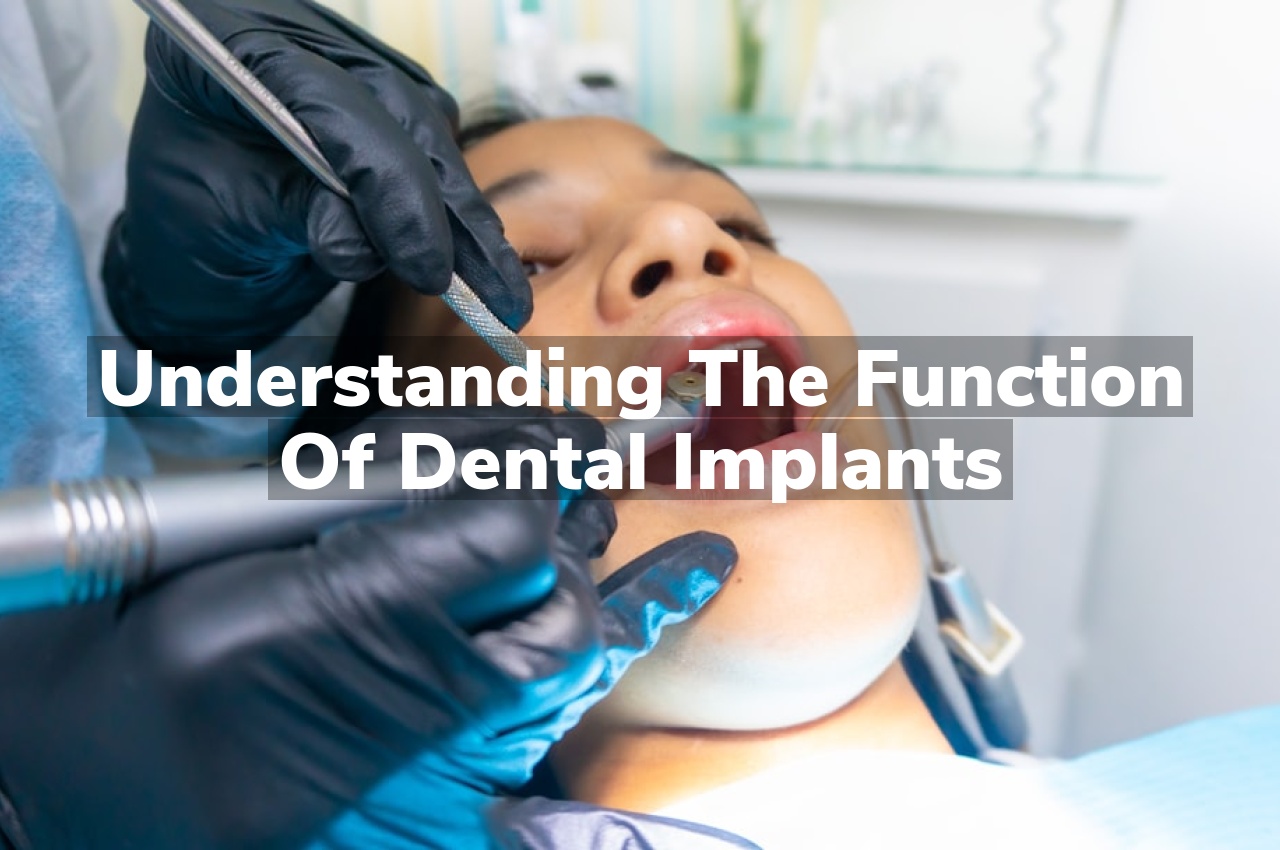Have you ever wondered how dental implants work to replace missing teeth? Dental implants serve as a foundation for artificial teeth, closely mimicking the structure and function of natural teeth by integrating with the jawbone to provide stable support for dental prosthetics. This process not only restores the appearance of one’s smile but also preserves oral health by maintaining jawbone integrity and supporting facial structure.
Basics of Dental Implant Functionality
Dental implants serve as a foundation for replacement teeth that feel, look, and function like natural teeth. The person who has lost teeth regains the ability to eat virtually anything, knowing that their teeth appear natural and that facial contours will be preserved. The implants themselves are tiny titanium posts that are surgically placed into the jawbone where teeth are missing. These metal anchors act as tooth root substitutes. They are then allowed to bond with the bone over a period of a few months. Once the bonding process is complete, they serve to anchor artificial teeth securely.
The concept of using titanium, which has the unique ability to fuse with living bone, has led to dental implants becoming the standard of care for the replacement of missing teeth. This process, known as osseointegration, provides a stable and durable foundation for replacement teeth. For those looking to understand this process in depth, Dental Implants: From Concept to Clinical Practice offers comprehensive insights into the development and clinical application of dental implants. This integration of the implant with the jawbone is crucial to the functionality and longevity of the implant-supported restorations, allowing them to withstand the forces of chewing and providing the patient with functionality comparable to that of their natural teeth.
Types of Dental Implants
Dental implants serve as a foundation for replacement teeth that feel, look, and function like natural teeth. Individuals who have lost teeth can regain the ability to eat virtually anything, knowing that their teeth appear natural and that facial contours will be preserved. The types of dental implants primarily include endosteal and subperiosteal implants. Endosteal implants are the most common type, surgically implanted directly into the jawbone. Once the surrounding gum tissue has healed, a second surgery is needed to connect a post to the original implant. Finally, an artificial tooth (or teeth) is attached to the post-individually or grouped on a bridge or denture.
Subperiosteal implants, on the other hand, consist of a metal frame that is fitted onto the jawbone just below the gum tissue. As the gums heal, the frame becomes fixed to the jawbone. Posts, which are attached to the frame, protrude through the gums. As with endosteal implants, artificial teeth are then mounted to the posts. Each type of implant offers a robust solution for replacing missing teeth, and the best choice depends on various factors including the patient’s dental health, the number of teeth needing replacement, and personal preferences. For those looking to restore their smile with confidence, Thornton dental implants for a confident smile might be worth considering.
Role in Oral Health Maintenance
Dental implants play a crucial role in the maintenance of oral health, serving as a foundation for replacing missing teeth. By filling the gaps left by lost teeth, they help in preserving the alignment of surrounding teeth and preventing them from shifting. This is essential in maintaining the overall structure of the mouth, ensuring that both biting and chewing functions can be carried out effectively. Furthermore, dental implants are designed to mimic the root structure of natural teeth, providing stimulation to the jawbone that helps in maintaining its density and preventing bone loss. This aspect of dental implants is vital for sustaining the health and integrity of oral tissues, contributing to the overall well-being of an individual’s mouth.
Dental Implants vs. Traditional Dentures
When considering options for replacing missing teeth, the choice often comes down to dental implants and traditional dentures. Dental implants are known for their durability and the way they mimic the natural structure of a tooth, potentially offering a more comfortable and stable fit. Traditional dentures, on the other hand, have been a long-standing solution that can replace multiple or all missing teeth without the need for surgical intervention. Each option has its own set of considerations, including the individual’s oral health, jawbone density, and personal preference. Understanding the differences between these two options is crucial in making an informed decision about oral health care.
For those looking into dental solutions, The Dental Center is here to help. Learn more by visiting our Thornton Dentist.
Longevity and Durability of Implants
When considering dental restoration options, understanding the longevity and durability of implants is crucial. Dental implants are designed to be a long-lasting solution for missing teeth, with many lasting for decades or even a lifetime with proper care. The durability of these implants is attributed to the high-quality materials used in their construction, typically titanium or zirconia, which are known for their strength and compatibility with the human body. This makes dental implants a reliable option for those looking to restore their smile and functionality of their teeth without the need for frequent replacements or adjustments.
Conclusion
For further inquiries, feel free to call us at (303) 457-1513 or read our reviews on Google Maps.

